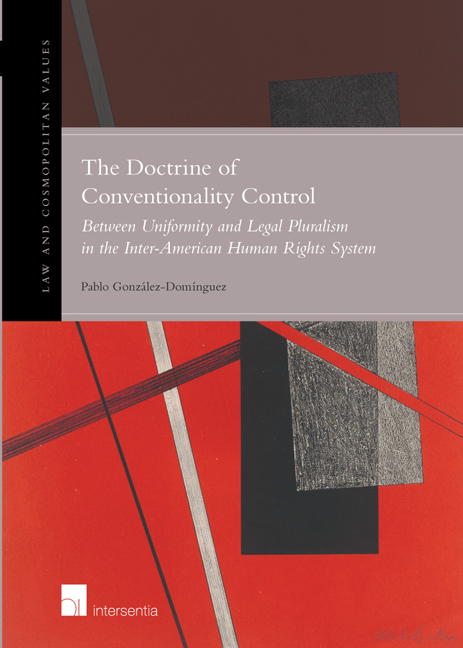 The Doctrine of Conventionality Control
The Doctrine of Conventionality Control Published online by Cambridge University Press: 11 October 2018
From the moment that violations of protected human rights are found, the evaluation of the incompatibility of legal provisions between domestic law and the American Convention on Human Rights becomes … no longer an abstract question. A law can per se be incompatible with the Convention to the extent that, for instance, inhibits the exercise of protected rights, even in the absence of a measure of application.
A.A. Cançado Trindade Dissenting Opinion in the case of El Amparo v. Venezuela (1995)INTRODUCTION
The study of the doctrine of conventionality control must start with a clarification: there is no article in the American Convention on Human Rights that expressly recognizes an international obligation for every public authority to perform an interpretation of domestic law in accordance with the Inter- American Corpus Juris, or to refrain from the enforcement of that law if no valid interpretation is possible. The creation of the doctrine of conventionality control – and therefore of each one of its technical components – is the result of a progressive and innovative interpretation performed by the Inter-American Court of Human Rights of the “general obligations” established in Articles 1.1 and 2 of the American Convention and of Articles 26 and 27 of the Vienna Convention on the Law of Treaties (hereinafter the Vienna Convention). The progressiveness of some of these interpretations (which served as the precedents for conventionality control) started years before the case of Almonacid Arellano and others v. Chile (2006) was decided.
The judgments that constitute the precedents for conventionality control developed the content of the obligation to ensure (Article 1.1), and progressively strengthened the normative force of Article 2. These judgments modified the understanding of Article 2 from being a norm with some sort of a programmatic nature – a position that supported the view that States have freedom to decide the means to ensure the rights protected by the Convention, and therefore that the Inter-American Court had little say in the specification of these means – to a norm that prescribed international obligations in the strongest sense of the word. This theoretical position opened the door for the Inter-American Court to evaluate the conventionality of the legislative and other measures taken by the States to ensure their compliance with the American Convention.
To save this book to your Kindle, first ensure [email protected] is added to your Approved Personal Document E-mail List under your Personal Document Settings on the Manage Your Content and Devices page of your Amazon account. Then enter the ‘name’ part of your Kindle email address below. Find out more about saving to your Kindle.
Note you can select to save to either the @free.kindle.com or @kindle.com variations. ‘@free.kindle.com’ emails are free but can only be saved to your device when it is connected to wi-fi. ‘@kindle.com’ emails can be delivered even when you are not connected to wi-fi, but note that service fees apply.
Find out more about the Kindle Personal Document Service.
To save content items to your account, please confirm that you agree to abide by our usage policies. If this is the first time you use this feature, you will be asked to authorise Cambridge Core to connect with your account. Find out more about saving content to Dropbox.
To save content items to your account, please confirm that you agree to abide by our usage policies. If this is the first time you use this feature, you will be asked to authorise Cambridge Core to connect with your account. Find out more about saving content to Google Drive.